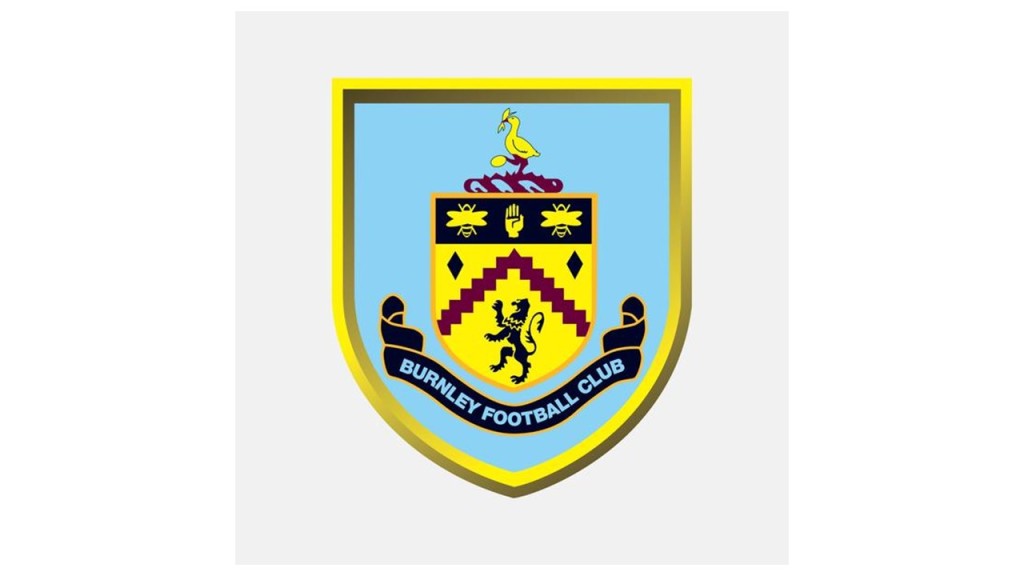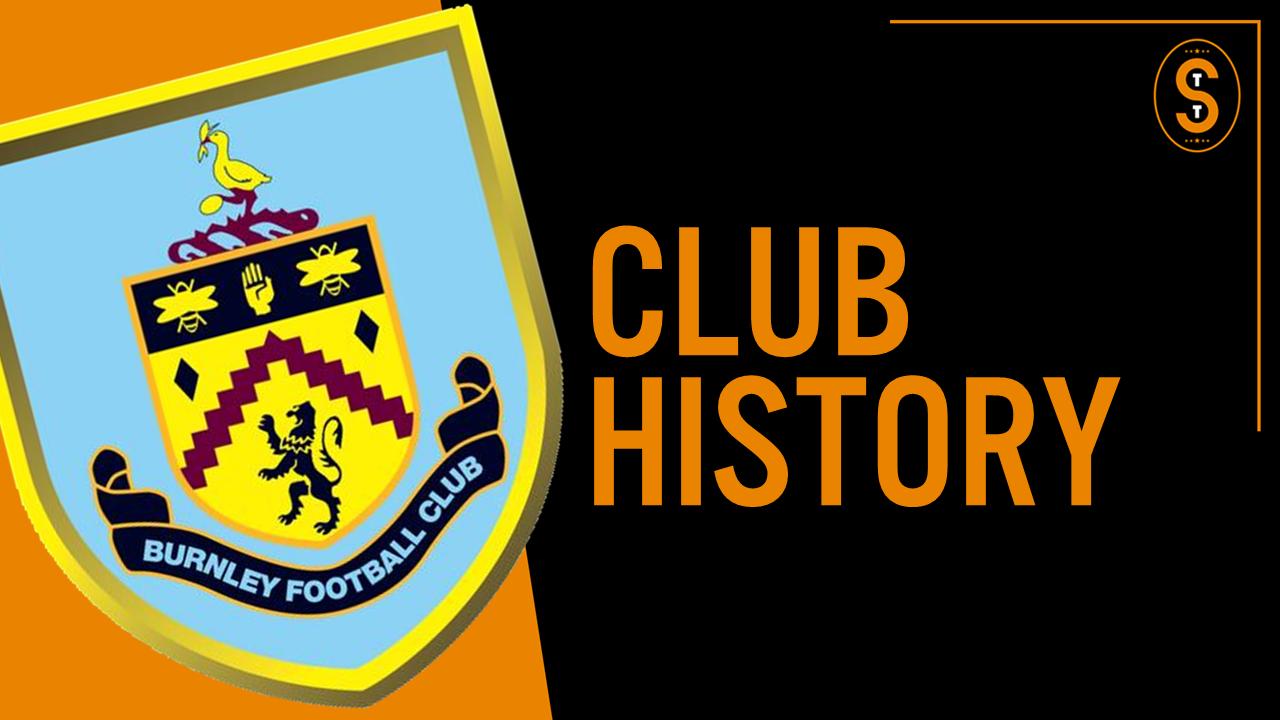Welcome to the Soccer Tavern, where we’re discussing the history, culture, and philosophy of the beautiful game. My name is Dave and in this series of videos, we’re discussing the history of soccer clubs around the world. Next up is Burnley Football Club. Pull up a seat and let’s start the discussion.
(Title Slides)
Burnley FC is located in the eastern part of the town of Burnley. The town is located in the Northwestern part of England in the United Kingdom. Burnley currently play in the Premier League. The club’s home ground is called Turf Moor, which opened in 1883, and holds 22,546 people.
Origin
Burnley traces its roots back to the 1870s with rugby clubs playing in the area but officially switched to a soccer club in 1882. The story is management for Burnley Rovers met at the Bull Hotel on May 18, 1882. At this meeting, management voted to change from playing under the rugby rules to playing under the FA rules (which were the rules of soccer). In the report from the meeting, the proposal for change was proposed by a man named Harry Bradshaw and the proposal obviously passed, otherwise I wouldn’t be telling you about the club right now.
The main driver for the change was not sporting related, but rather was motivated by monetary incentives. The club had run a deficit the previous year and thought there was more financial opportunities in the world of soccer. By that summer, the ‘Rovers’ name was dropped and the club became Burnley Football Club. They then moved into Turf Moor in the Spring of 1883 and have been there ever since.
Nicknames
The club is nicknamed ‘The Clarets’.
This nickname refers to the club’s colors of claret and blue.
Burnley didn’t always play in those colors. The club changed colors a handful of times in their early years, but in 1911, they changed to the colors of claret and blue to emulate Aston Villa, who was the most successful club at the time. Burnley have been those colors ever since.
Crest
Now let’s discuss the crest.

Current crest has been used since 2010.
The stork at the top is a reference to the Starkie family who were a prominent family in the area. In the stork’s beak, it is holding the Delacy knot, which is the badge of the Delacy family who were the ruling family in the Burnley area dating back to medieval times. The stork is standing on a hill surrounded by cotton plants which was the main industry for the town of Burnley.
The hand represents the town motto of “Hold to the Truth.”
The bees on either side of the hand reference the town’s hard working attitude and derive from the saying, “Busy as a bee.” The Bees also are in reference to Turf Moor’s old end of the ground, which was nicknamed the Beehole.
The weird wavy looking arrow in the middle of the crest represents the local river Brun.
The lion in the bottom middle of the shield represents royalty as Burnley were the first club to have someone from the monarchy visit their ground. This occurred in 1886 when Prince Albert attended the first half of their match against Bolton.
The ribbon at the bottom, which now says Burnley Football Club, used to have a Latin saying which I will now butcher the pronounciation, “Pretiumque Et Causa Laboris”. This translates as “the prize and the cause of our labours.”
Important Events
Now let’s talk about some important events in the club’s history.
First up, Burnley FC was one of the founding members of the Football League on April 17th, 1888 at the Royal Hotel in Manchester. This league laid the foundations for what eventually became the English football pyramid and would evolve into the Premier League a century later.
The next event happened on April 25, 1914. On this date, Burnley won their first and only FA cup trophy, beating Liverpool 1-0 in the final. Burnley’s goal was scored by Bert Freeman, whose father travelled 13,000 miles from Australia to see his son score & win the cup for Burnley. That must have been one hell of a trip. In addition to Burnley winning the cup, this final was significant for a couple other reasons. (1) It was the first final to be played with the current reigning monarch in attendance – who was King George V. (2) It was the last FA Cup final before WWI put all soccer on hold for a few years.
The next event happened in the 1920-1921 season when Burnley won their first top flight title. Along the way, the club had a 30 match unbeaten streak in the league. This remained an English record until Arsenal broke it in the early 2000s.
The second to last event I want to discuss happened on July 25th, 1955 when Burnley opened Gawthorpe training grounds. The facility was the brainchild of Manager Alan Brown. His concept was to have a training ground away from the stadium where players could be properly trained and young players could be schooled and developed. It was one of the first facilities of its kind and provided the blueprint for the way modern clubs operate today. Very progressive thinking from the club.
And finally, the last important event I’ll cover in this video came on May 9, 1987. Burnley was in the 4th division and was in danger of being relegated out of the Football League (meaning they would become semi-professional, which is largely seen as a death sentence for professional clubs). The club needed to beat Leyton Orient on this day. If Burnley lost the match, they would have been the first of the 12 founding clubs for the Football League to drop out of the pyramid through sporting merit, which was obviously something they wanted to avoid. Burnley scraped together a 2-1 victory to remain in the Football League and began their rise up to the Premier League where they are today.
Supporters
No official supporters group nicknames for Burnley fans. Something interesting though is that Burnley’s most famous fan is Prince Charles who is the current heir to the British Throne.
Noteworthy Players
Now let’s talk about some of Burnley’s most famous players.
Jimmy McIlroy is widely regarded as the greatest player in the club’s history. He made almost 500 appearances for the club, scoring 131 goals between 1950 and 1963. He won a first division title with the club in 1960 and was recognized as a world class player during his playing career.
Jimmy Adamson was captain of the 1960 1st division title winning squad. He spent his whole 17-year playing career at Burnley, also managing the club for 6 seasons after he retired.
While those first 2 are legends at Burnley, these next 2 are definitely famous, but more so for their time spent elsewhere.
Paul Gascoigne is famous for his on field performances early in his career, but by the time he joined Burnley on the downside of his career, he was not the same player. Still very famous throughout England, he’s not known for his time at Burnley, though does deserve mention here due to his immense fame.
Ian wright played for Burnley in the last half of his final season in 2000. Wright was and still is one of the most prolific goal scorers in both the English National Team and Arsenal’s history.
Noteworthy Managers
Now let’s discuss some of Burnley’s famous managers.
John Haworth was manager of the club from July 1910 to December 1924. He was instrumental in changing the club’s colors to claret and blue. He also led Burnley out of the second division and won the FA Cup in addition to their first 1st Division title. He was the manager that oversaw Burnley’s record 30-match unbeaten run. He unfortunately contracted pneumonia while still manager of Burnley and passed away in December 1924.
Another famous manager was Alan Brown, who I mentioned earlier. Brown was only in charge for 3 years from 1954-1957, but he was instrumental in getting the training ground built and was adamant about youth development rather than buying players. He established Burnley as a great defensive squad and went on to many other managerial jobs throughout England. Many managers cite him as an influence for their careers including Brian Clough.
It’s also worth pointing out that Burnley’s current manager, Sean Dyche, has been making a name for himself as a great defensive tactician and is leading Burnley to great things given their small budget and profile when compared to most of the other Premier League clubs. So keep an eye on him.
Rivals
Now it’s time to talk about rivalries.
Burnley’s biggest and most passionate rivalry is with nearby East Lancashire neighbors Blackburn Rovers. Both clubs were founding members of the Football League in 1888 and only 8 miles separate the 2 towns. There were a handful of incidents in some matches over the course of about 80 years but the rivalry was by most accounts pretty tame until the 1970s. With the rise of hooliganism in the 1970s and the proximity between the two towns, the rivalry turned violent. This was aided by the two towns sharing the same rail line. While the violence isn’t quite as prevalent these days, the animosity between the two sets of fans and players is still felt today.
Given the distance between the towns, almost 130 years of matches being played against each other, and the hooligan history, this makes for an intense rivalry.
Stats & Records
Time to talk about some stats & records as of February 2018 when we are recording this video:
Burnley have spent 55 seasons in the top flight in their history.
The club has 3 major trophies including:
- 1 FA Cup
- 2 First Division Titles
The club’s record first team appearance holder is Jerry Dawson with 522 appearances.
The club’s record goal scorer is George Beel with 187 goals.
The club’s record transfer purchase was Chris Wood from Leeds United on August 21, 2017 for about £15M.
The club’s record transfer sale was Michael Keane to Everton FC on July 3, 2017 for about £26M.
And one last interesting fact about Burnley FC: the club is one of only three clubs to have won all four professional divisional titles in the English Football league pyramid.
So there you have it… a bit of history on Burnley FC. Let’s continue the discussion in the comments section below this video.
Thanks for stopping by the Soccer Tavern. Hope to see you again sometime soon. Cheers.
